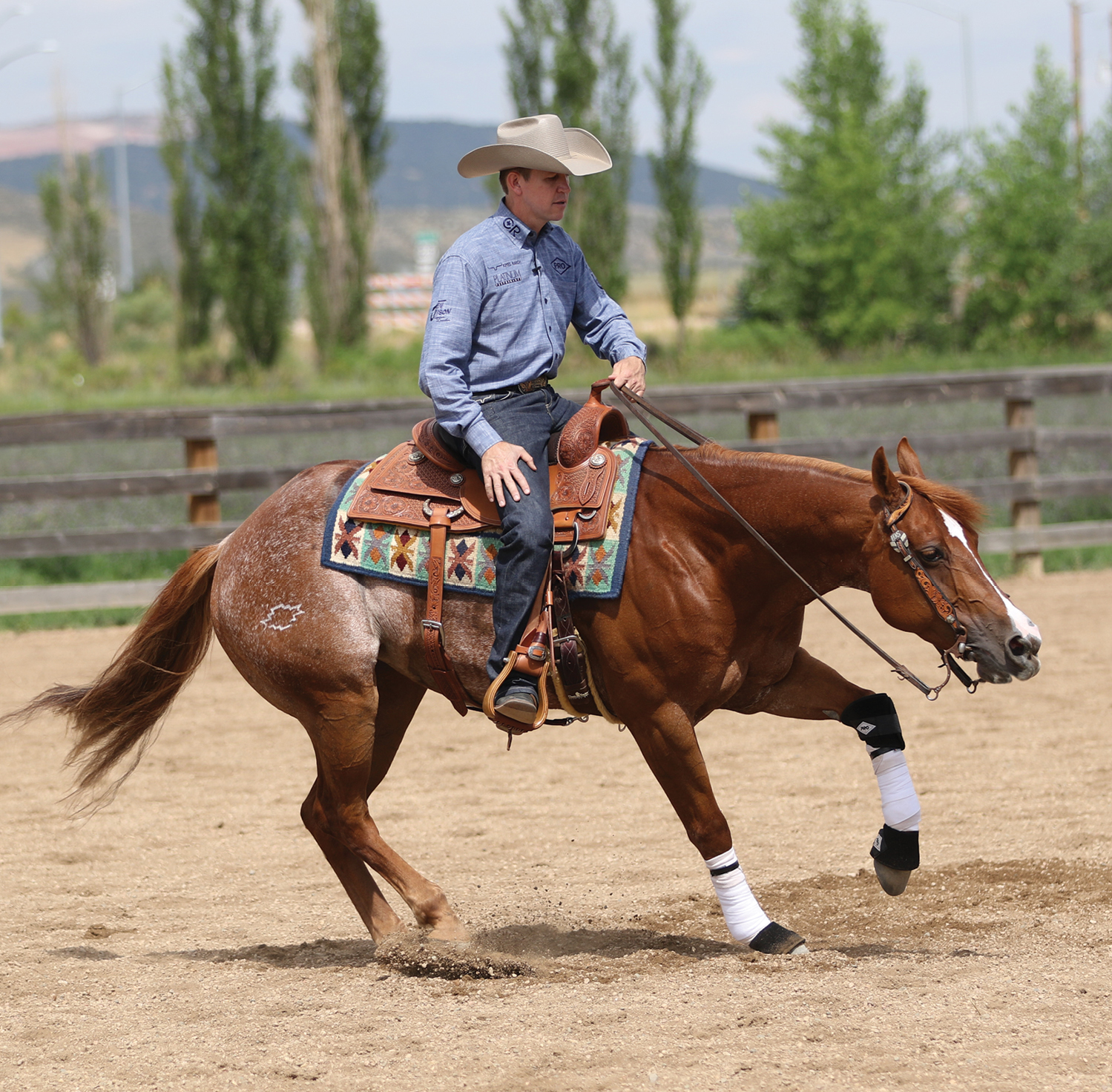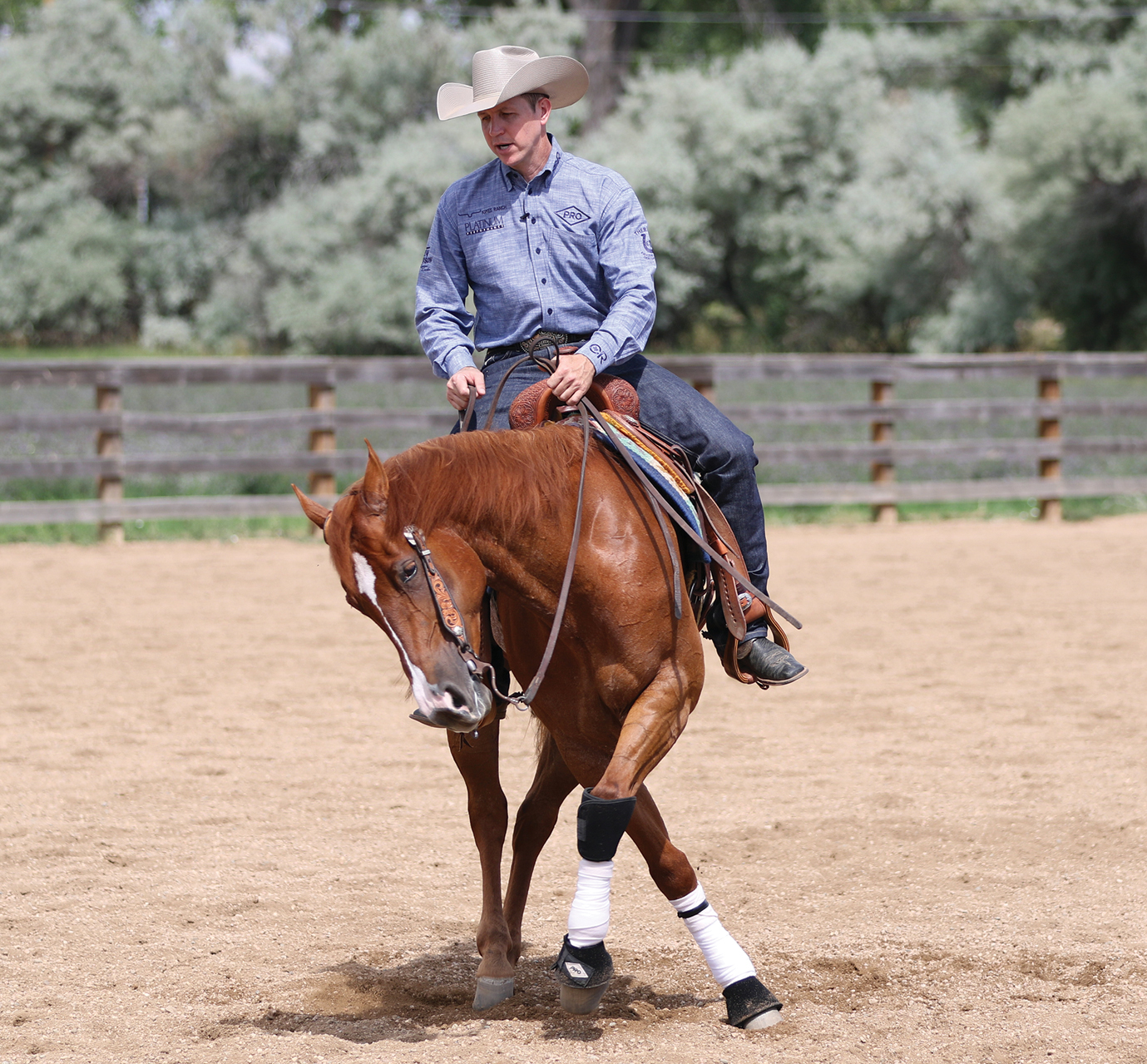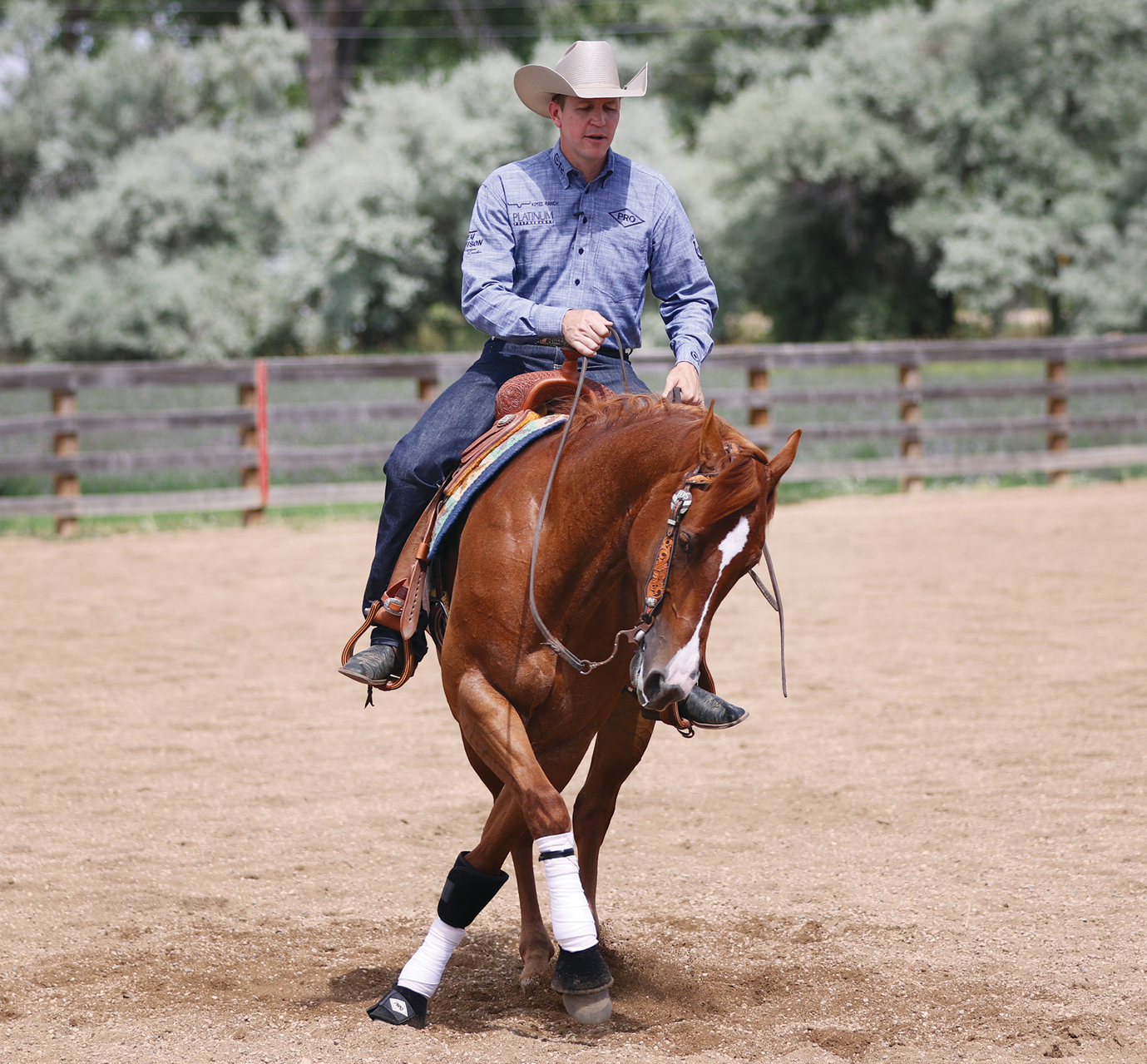Being able to properly start and stop a spin will not only help improve your score in the show pen, it’ll also help you with overall steering and control when you’re in the saddle. While I adjust my riding to fit the horse I’m working with according to his ability or style, here are a few of the things I do when working on a spin.
[RELATED: PERFECT YOUR ROLLBACK]

The Start
Before I even ask for my horse’s legs to move in the turn, I ensure he’s wanting to look in the direction I want to spin. If he doesn’t, I’ll emphasize the neck rein. If my horse still ignores my cue and doesn’t turn his head slightly in the direction I’m turning, I’ll take my direct rein (the rein closer to the direction I’m turning) and pull his head to the inside.
When he moves his head over, I relax my direct rein, but continue to have my neck rein against him. If he moves his head back to center, I’ll go back to my direct rein to adjust his head. My horse should want to keep his head turned into the direction I want to turn as long as that neck rein is touching him. When I bring my hand back to the center of his neck, he can straighten his head back out.
[WATCH: BUD LYON START & STOP A SPIN ON HORSE&RIDER ONDEMAND]
Once I know my horse is listening to my rein cues, I ask him to start moving his feet. I’ll cue for him to turn with my outside leg and release my inside leg, so he has somewhere to go.
If needed, I’ll go to two hands and position his head in the direction of the spin.
The speed of your spin will be determined by how many times you turn. In ranch riding or horsemanship, you usually only do one or two turns at a time, which means you need to build speed faster than you would for a reining class where you turn four times.
Grab the gear you need to head to the practice pen with your horse! Grab bell boots, polo wraps or sport boots, knee guards, and skid boots.
Products we feature have been selected by our editorial staff. If you make a purchase using the links included, we may earn a commission. For more information click here.

If I know I’m going to be turning four times, I allow my horse a quarter of a turn to find cadence and rhythm in his feet before asking for more speed. Correctness is more important than speed, so if my horse starts tripping over himself or is no longer keeping his hindquarters in the same place, I’ll slow down to reinforce the correctness and then ask to build his speed again.
The Stop
The shutoff in a spin is extremely important in the show pen because over turning or having your horse completely ignore your shutoff cue results in a penalty.
When asking for a shutoff, the first thing I like to do is say “whoa”. While other trainers prefer to just use their hands and feet to stop a spin, I find it helpful to have my horse listen for a verbal cue, as well. By using my voice and not just a hand motion, I also find my horses are less likely to misread me, especially if I’m tight or my hand moves a little more when I’m in the show pen.

As I test my verbal cue out, I try not to change my feet or hand position at all and see if he makes a good attempt to try and shut off his spin. If he does, I praise him and let him settle for a few moments before asking him to turn once again.
[RELATED: STOP YOUR SPIN ACCURATELY]
If he doesn’t stop when I say whoa, I go to my hand and use my neck rein as a second signal. If he continues to ignore my cue, I’ll go to two hands and immediately steer him in the opposite direction to have him respect that neck rein a little more. It’s OK if he gets confused, but don’t rush and make it a scary experience. Let him find his rhythm. Confidence is important when you’re performing a turn. Once I make a couple of turns the opposite direction, I’ll ask for the stop again. If he continues to ignore my cue, I’ll go back to turning the way I was originally going. Once he respects my vocal command and neck rein cue, I stop and let him settle.
Want to try products Bud uses? Grab them on Amazon; Kimes Ranch apparel and Platinum Performance.






